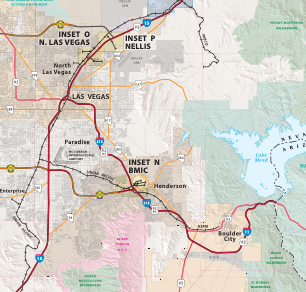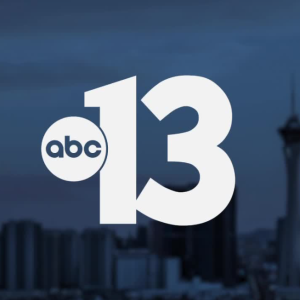LAS VEGAS (KTNV) — Changes could be on the way for Nevada railroads.
Lawmakers heard Assembly Bill 456 this week, which would regulate how long trains can be. If passed, it would limit the length of trains to 7,500 feet — which is about 1.4 miles long.
It would also put rules in place to detect potential problems sooner by mandating defect detectors — devices that signal problems with passing trains — be installed every 10 to 15 miles, depending on the area. And it would mandate that train crews be notified whenever those detectors trigger alerts for failures that could impact them, like brakes overheating.
There are currently no federal regulations governing the length of trains.
"They're kind of leaving it up to the states, it seems like, much like trucking," freight railroad engineer and conductor Gabe Christenson said. "In the state of the California, you can't run triple-trailer loads, but in the state of Nevada, you can. It's kind of the same with train length."
When trains get longer, Christenson told state lawmakers they can become more dangerous.
"Trains are now averaging 15,000 feet long and between 20,000 and 30,000 tons. This is more than double the normal size," Christenson said. "The equipment we use and the tracks we run on are the same as they have been since the Civil War, except for the introduction of diesel/electric locomotives. The cars these trains haul and the tracks they run on were never designed to accommodate trains of this magnitude."
Christenson added this can lead to derailments.
"Just to give you an idea of these forces, we're seeing some cars, in some scenarios, ripping in half like a cracked egg," he said.
Locomotive engineer Ron Kaminkow said longer trains could also negatively impact the community.
"They're difficult to operate for the operating crews. They obstruct the movement of passenger trains," Kaminkow said. "They're prone to mechanical delays. They derail more frequently and when they do derail, the results as we've seen in numerous instances over the last few years are more dramatic."
The Legislative Council Bureau revealed statistics on derailments in the State of Nevada.
In 2022, there were nine incidents over six months. From 2021 to 2022, there were 27 incidents. There were eight derailments in 2021 and 22 in 2020.
The most recent one was in the Mojave National Preserve about a week ago.
Other factors that can lead to more derailments include jobs being cut up to 40%, people working longer hours, conductors getting less training, and fewer railroad inspections, the engineers told lawmakers.
Some officials said longer trains can also block intersections and prevent emergency vehicles from reaching people that need help, or cause traffic delays.
"It does help larger intersections not be blocked. Say downtown Las Vegas between Desert Inn and Wyoming Street, that's roughly, about a 7,200-foot train can fit there and we're constantly parking trains there. We block those very busy crossings on a very regular basis," said Jason Doering, the Nevada State legislative director for the Sheet Metal, Air, and Transportation Division. "By eliminating the size of a train, it just would help mitigate a good portion of the crossings that are potentially going to be blocked by these massive trains."
Several Union Pacific lines run through Las Vegas, which you can see on this map from the Nevada Department of Transportation:

Union Pacific said they're against this bill.
"A bill like 456 would restrict the flow of commerce into and out of Nevada and impact customers and consumers who rely on a robust supply chain to deliver needed commodities," said Peggy Ygbuhay, head of Union Pacific public affairs in Nevada and California. "States are not permitted to directly regulate railroads' economic decisions, which includes restrictions pertaining to train length or blocked crossings."
She said the bill would likely be challenged if passed into law.





